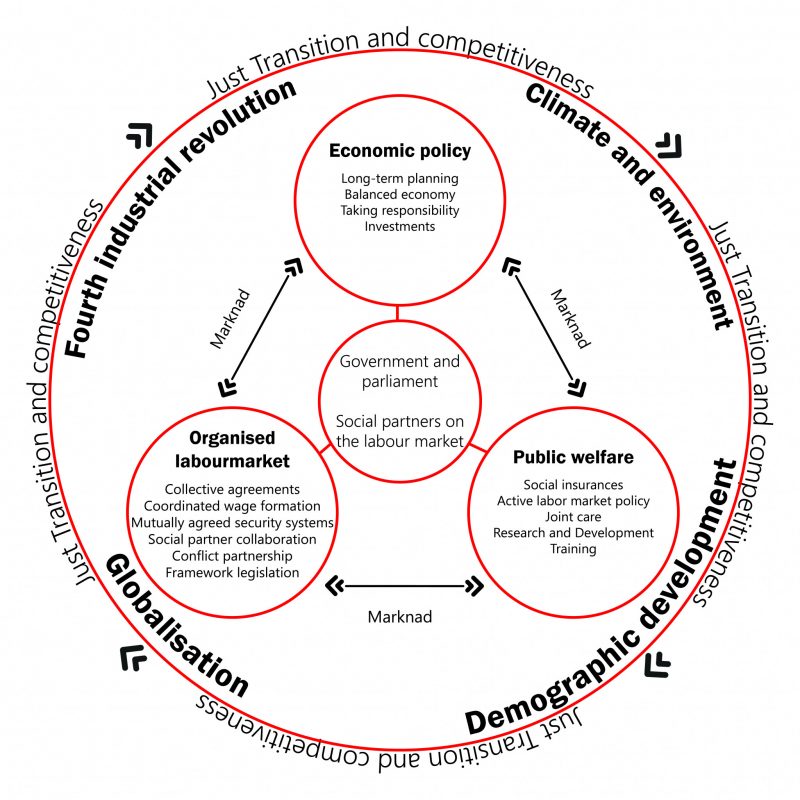
The World Inequality Report 2022 of India stands out as a “poor and highly unequal country, with rich elite”, with the top 10 percent holding 57 percent of GNI while the bottom 50 percent share only 13 percent in 2021. India’s middle class is relatively poor with an average wealth of only Rs 7,23,930 or 29.5% of GNI, compared to the top 10 % and 1 % owning 65 % (63, 54,070 rupees) and 33 percent (3,24,49,360 rupees), this is the time when India must build on its strength and take action to make 2022 and the years ahead – the Indian Year of Positive Climate Change, Gender Inclusion and Innovation. The Nordic countries which makeup about 0.3% of the world’s population and are mostly homogeneous compared to India are the world leaders in these criteria. There are some key lessons that India (which is a very heterogeneous subcontinent and has about 18% of the world’s population) could rethink.
Countries of the Nordic are among the greenest societies in the world. Electric cars are more popular in the region than anywhere else in the world. Nordics EV’s success can be attributed to easy access to street charging points, a series of tax breaks, and other financial islands. The rapid success of electric vehicles that are good for the environment is forcing some serious financial panics in Norway. The eco-label on the packaging of goods and services across the region provides information about plastic and chemical footprints, and their governments are now working to expand the information to include the carbon footprint as well. This focus on awareness goes a long way to making a positive impact on the climate, but there are still discussions about how to calculate and report the carbon impact.
These countries have the lowest level of income inequality in the world. Nordic countries are among the first countries in the world to replace maternity leave with gender-neutral parental leave. In Norway, both parents must take at least 14 weeks of vacation after the birth of the child. Sweden has a “daddy month” that requires every parent to take at least some leave on a “use it or lose it” basis. Norway was the first country in the world to introduce a quota law requiring the boards of listed companies to have a gender balance of at least 40/60. This has increased the number of women directors on boards of listed companies from 6 percent in 2002 to 42.5 percent in 2021 and is part of a general ambition to enhance women’s leadership in the private sector.
In Denmark, the legally binding Gender Equality Act obligates all public authorities to promote equality and ensure equal representation of women and men on boards, councils, and committees. It obligates public corporations and corporations to set goals in boards of directors and establish policies in management to promote gender balance. Iceland was the first country in the world to implement an equal pay certificate policy in 2018, requiring companies and organizations that employ 25 or more workers every year to prove that they pay men and women equally for a job of equal value.
Nevertheless, India maintained its 10th strong position like last year in the Climate Change Performance Index (CCPI) 2021. The CCPI assesses 60 countries and the European Union, which together generate more than 90 percent of global greenhouse gas emissions. India’s performance is rated high in the categories of greenhouse gas emissions, energy use and climate policy, and average in renewable energy. India improved its ranking in the Global Innovation Index (GII) 2021 to rank 46 among 132 economies, compared to 62 a decade ago. The index ranks the world’s economies according to their innovative capabilities and consists of nearly 80 indicators.
Despite India’s poor performance in the rankings of the Global Gender Gap Report 2021 by the World Economic Forum. India’s performance in female enrolment in primary, secondary, and tertiary classes is comparable to that of the best countries in the world. Girls’ education is a positive cycle with a long-term impact on society and human development. India has a unique demographic advantage, as half of its population is of working age.
Approximately women still lag behind men in wages, management, and business ownership in the Nordic region. They are still basically white men sitting at the head of many of the most famous companies in the area. The labor paradox still exists in the world’s most equal nations. The Nordic region accounts for less than 0.5 percent of global carbon dioxide emissions. The figure shows that even if all Nordic countries succeed in becoming carbon neutral; this would have a very limited direct impact on global emissions. But if India succeeds in achieving these goals, there will be a huge impact on the world.







